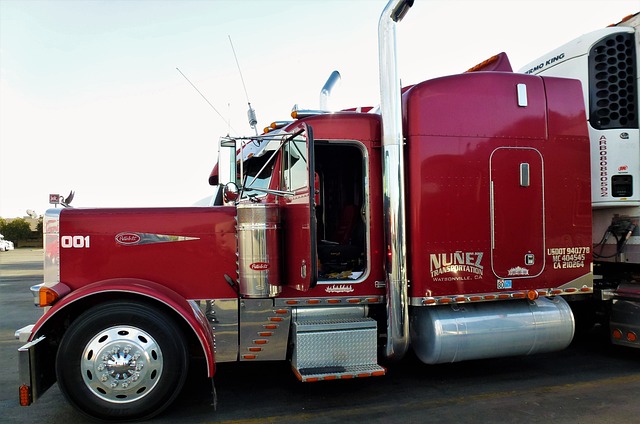Looking to register your car in California? Navigating the process can seem daunting, but we’re here to help. This guide breaks down the step-by-step procedure, from understanding the California car registration requirements to preparing for a crucial VIN verification. Learn what documents and fees are needed, master the application process, and discover how to maintain your vehicle records post-registration. Get ready to hit the road with confidence!
- Understanding the California Car Registration Process
- Preparing for VIN Verification: What You Need to Know
- Steps Involved in Registering a Vehicle in California
- Required Documents and Fees for Car Registration
- Post-Registration: Maintaining Your California Vehicle Records
Understanding the California Car Registration Process

Understanding the California Car Registration Process involves grasping several key steps and requirements. In California, car registration typically begins with verifying the vehicle’s unique identifier, known as the Vehicle Identification Number (VIN). This critical step ensures that the car is genuine and has not been reported stolen. A mobile VIN verifier or a vin inspection service can facilitate this process by cross-referencing the VIN against state databases to confirm its authenticity.
Once the VIN verification is complete, you’ll need to gather essential documents including proof of ownership, a valid driver’s license, and current registration (if transferring from another state). You must then submit an Application for Title and Registration along with the necessary fees to the California Department of Motor Vehicles (DMV). This process can typically be completed at a local DMV office or, in some cases, through a designated agent, streamlining the entire car registration experience.
Preparing for VIN Verification: What You Need to Know

Preparing for a VIN (Vehicle Identification Number) verification is a crucial step in the car registration process in California. Before heading to the DMV, ensure that your vehicle meets all legal requirements and that you have all necessary documents in order. This includes proof of ownership, current insurance, and a valid driver’s license. Additionally, having a clear understanding of your vehicle’s history can save time and potential headaches during the inspection.
For a smoother process, consider using a mobile vin verifier or undergoing a vin inspection prior to registration. These services can help identify any issues with your vehicle’s VIN, such as discrepancies or potential fraud, allowing you to address them before visiting the DMV. This proactive approach can make the registration process more efficient and stress-free.
Steps Involved in Registering a Vehicle in California

Registering a car in California involves several crucial steps to ensure your vehicle is legally compliant and roadworthy. The process begins with gathering essential documents, including proof of ownership, valid identification, and current registration (if transferring from another state). You’ll also need to undergo a vin verification process to confirm the vehicle’s identity using its unique Vehicle Identification Number (VIN).
Next, you can choose between several options for vin inspection. Traditionally, this involves visiting a California Department of Motor Vehicles (DMV) office. However, many Californians opt for a mobile vin inspection or vin inspection service, which provides convenience by coming to your location. After successful vin verification, you’ll be issued a registration certificate and license plate, finalizing the registration process and allowing you to legally operate your vehicle on California roads.
Required Documents and Fees for Car Registration

To register your car in California, you’ll need several essential documents and will be required to pay specific fees. Before you begin, ensure you have all necessary paperwork ready to streamline the process. One crucial document is the Vehicle Identification Number (VIN) verification report, which can be obtained through a mobile vin verifier or by conducting a vin inspection. This unique identifier is critical for identifying your vehicle accurately.
Additionally, expect to provide proof of ownership, typically a bill of sale or a previous registration, and a valid driver’s license. You might also need a completed Application for Title and Registration form, available from the California Department of Motor Vehicles (DMV). Keep in mind that fees vary based on your vehicle’s type and age, so be prepared to pay the applicable charges, which include a registration fee, a title fee, and potentially other taxes or assessments.
Post-Registration: Maintaining Your California Vehicle Records

After successfully registering your vehicle in California, it’s crucial to maintain accurate and up-to-date records. This involves regular VIN (Vehicle Identification Number) verification to ensure all information associated with your car remains correct and current. Keeping detailed records is essential for both legal compliance and personal convenience.
One practical step you can take is utilizing mobile VIN verification services. These services allow for convenient, on-demand checks of your vehicle’s history from the comfort of your home or even while at a dealership. Regularly conducting a mobile VIN inspection ensures that any changes in ownership, registration details, or maintenance records are promptly captured and reflected accurately in California’s database. This proactive approach not only simplifies future registration renewals but also helps prevent potential issues related to vehicle identity.
Registering a car in California involves several straightforward steps, from understanding the process to providing accurate information. Key aspects include preparing for the Vehicle Identification Number (VIN) verification, gathering essential documents, and paying the required fees. Once registered, it’s crucial to maintain up-to-date vehicle records to ensure compliance with state regulations. Remember, a smooth registration process begins with proper preparation, including verifying your VIN, which is a critical step in the California car registration journey.
